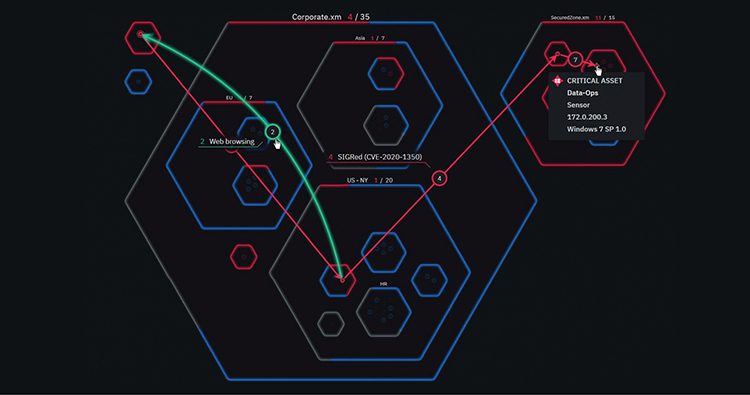|
Getting your Trinity Audio player ready...
|
Continuous Threat Exposure Management (CTEM) is a proactive and continuous five-stage program or framework that helps organizations monitor, evaluate, and reduce their level of exploitability and validate that their analysis and remediation processes are optimal. Organizations worldwide are leveraging CTEM to efficiently address exposures and improve their security posture.
CTEM continually assesses an organization’s entire ecosystem, including networks, systems, assets, and more, to identify vulnerabilities and weaknesses with the goal of reducing the likelihood of these weaknesses being exploited. Having a CTEM program can enable continual improvement of security posture by identifying and remediating potentially problematic areas before attackers can leverage them.
The “continuous” element of CTEM refers to a give-and-take relationship between the CTEM program and the associated risk remediation efforts, wherein data stemming from both aspects informs processes to make ever-more optimal decisions about how to manage exposure risk. According to Gartner® in their report, Implement a Continuous Threat Exposure Management (CTEM) Program, “the objective is to get a consistent, actionable security posture remediation and improvement plan that business executives can understand and architecture teams can act upon.” (Gartner, 21 July 2022).
Why Should My Organization Implement CTEM?
According to Gartner, “By 2026, organizations prioritizing their security investments based on a continuous exposure management program will be three times less likely to suffer from a breach.” So clearly, vulnerability management is no longer sustainable and it’s crucial to start to think towards this continuous paradigm, wherein organizations take measurable actions to detect and prevent potential threats and vulnerabilities on a consistent basis. Additionally, organizations should implement CTEM in order to:
- Prioritize Threats – CTEM assists organizations in prioritizing threats according to their potential business impact. This allows organizations to evaluate the severity and damage potential of every threat, and then allocate resources accordingly. This empowers organization security teams to not only prioritize more significant risks, but also use resources more efficiently and respond more quickly to the most potentially damaging threats.
- Gain Actionable Insights – CTEM was designed to help organizations derive actionable insights from threat intelligence in real time. This allows security stakeholders to immediately and effectively remediate issues in a much more targeted and timely manner.
- Proactively Manage Risk – CTEM changes the risk management equation by enabling proactive handling of vulnerabilities and threats based on continuous monitoring of digital infrastructure. This is a far more holistic approach to cybersecurity that moves security focus away from reactive, and markedly enhances cyber defense.
- Augment Cyber Resilience – Organizations implementing a CTEM program continuously reassess and improve their defenses. This type of iterative refinement results in more robust cyber resilience, since organizations are able to draw conclusions from every assessment, then adapt defenses accordingly.
- Enhance Adaptability – CTEM programs are inherently adaptive, helping companies respond to emerging or evolving technology and cyber threats. This makes sure that protection is both continuous and relevant, which is critical in a rapidly-changing digital landscape.
- Align Security with Business Objectives – CTEM encourages organizations to align cybersecurity with their business objectives. Incorporating strategic business goals into their CTEM program enables organizations to ensure that security is a goal enabler – not a stumbling block.
The 5 Stages of CTEM

Stage 1 Scoping
This first stage encompasses understanding your attack surfaces and what is more important and what is less important to your business. The scope will naturally expand and shift as your program becomes more established. This process will include identifying key attack surfaces and requires input from various decision-makers, such as leaders from IT, Legal, GRC, Dev, R&D, Product, and Business Ops teams.
Stage 2 – Discovery
This step digs in to uncover assets and their level of risk. When considering risk, it is CRUCIAL to note that risk extends beyond vulnerabilities. What to take into consideration: software, hardware, data hubs, IoT, websites, and networks. You’ll also want to cover vulnerability discovery and risk assessments.
Stage 3 – Prioritization
You’ll never be able to fix EVERYTHING – and you don’t need to. This step is all about identifying the most impactful issues – i.e., the ones with the greatest business impact and the greatest likelihood, or lack thereof, leading to critical assets – and creating a plan to fix those issues first.
Stage 4 – Validation
This stage looks at how attacks can occur and the likelihood of their occurrence. This step will leverage a variety of tools, with the goal of assessing if the assertions of the steps above are accurate and validated.
Stage 5 – Mobilization
This stage, which in a sense serves as the facilitating factor for the entire framework, is where you make sure everyone is on the same page and understands their role and responsibilities within the context of the program.
Leveraging CTEM for Continuous Improvement
Adopting a Continuous Threat Exposure Management program enables risk reduction while factoring in business priorities. The continuous approach means that organizations can continuously monitor, prioritize, validate, remediate and optimize processes. It should be implemented using a phased approach to CTEM, making use of existing and new technology as they come out to support it.

